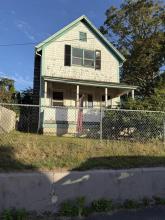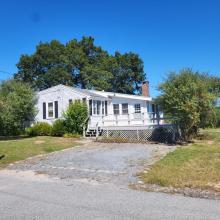Marion’s capital spending conundrum
To the Editor:
Marion voters face a conundrum on allocating scarce capital resources. The Town House Committee has proposed two options regarding the Town House restoration. This discretionary spending proposal competes with a mandatory capital spending compliance requirement for the renewal of the sewer plant’s EPA discharge permit.
The Town House also competes with payment of existing debt obligations from past projects, already committed projects, forecasted spending on other town capital needs such as a new Department of Public Works garage and unfunded employee retirement obligations.
Marion has very little capacity to fund capital spending from free cash – only about $500,000 in a good year. Debt becomes the major source of financing capital spending.
The mandatory EPA permit compliance problem now hangs over the town with the cost of the draft permit compliance estimated by the town’s consulting engineers at $34 million. This is the best forecasting number available at this time and will change when the final permit requirements become known.
A companion problem is the management of the considerable inflow and infiltration entering the sewer system. This is ground water entering the sewer system though manholes, leaky sewer pipes, improper sump pump and other drainage connected to the town’s sewer lines.
The $18 million five phase Village drainage, paving and sewer project will help solve some but not all these issues, such as the problem emanating from Creek Road. The reality of the problem requires the two projects to run in tandem as management will be an EPA permit compliance issue. This increases the mandatory spending to $52 million. Yes, there are cost reductions available from this Village project such as the elimination of granite curbing and fancy lighting now found on South Street.
The Town House renovation, options 1 and 2, is discretionary spending. The spending forecast is $64.4 million if the $12.4 million option is selected or $80 million if the $28 million option being advocated in a recent letter to local media is adopted.
Add approximately $27 million in other capital spending projects identified by the Capital Committee, including a place holder for a needed DPW garage, the capital spending forecast increases to $107 million. Add this on top of the existing debt of $32 million issued to fund past capital spending, such as the school and sewer plant, and the forecast again increases $139 million. Again add the estimate $18 million of unfunded retirement liabilities and a $157 million target number for Marion’s “Current and Future Obligations, Commitments and Forecasts” is reached. This target forecast fits within a reasonable statistically significant forecast range of between $133.6 million to $180.8 million.
Also to be considered are the statutory debt limitations capping the amount of debt the town can issue for capital projects. It is clear the debt caps are going to be an issue. This also becomes the harbinger of the future town sewer war and the degree Tabor, as a large sewer user, participates in paying its share of the financing of the sewer plant upgrades.
The debt accumulation adversely impacts the town’s bond rating and future cost of borrowing. Grant money will not be significant in funding capital projects. Low cost financing though the state for the sewer plant and related project is “nice” but the reality is it’s still debt that has to be paid back. These debt amortizations, as we are now paying for the school and sewer plant, usually last a generation.
Last year’s town meeting approved $500,000 for the design of the Town House proposals. My understanding is $100,000 has been spent to date. At this point a moratorium on Town House spending should be imposed until such time as better definition on the EPA permit compliance costs are understood.
The target $157 million capital spending and unfunded obligations forecast is material for many of Marion’s 2,500 taxpayers. To illustrate this amount, this equates to approximately a 60 percent tax increase if these target costs were to be funded for 20 years at 4 percent amortization. The estimated tax increases on an individual project basis are 15 percent for the sewer plant upgrades; 5.6 percent for the election of the $12.4 million Town House option and 15.2 percent for adoption of the $28 million Town House option. Add the $28 million Town House option together with the sewer plant and the tax increase is 27.7 percent. This is a permanent tax increase and depending on its structure can form a new base for the annual proposition 2.5 percent tax increase.
The issue here is the magnitude of the costs now coming before Marion taxpayers not the precision nor timing inherent in any forecasting.
There is no municipal financial capacity to fund large discretionary capital projects such as the restoration of the Town House and other gifted municipal buildings. The use of private money needs to be a key factor and the cornerstone for the restoration and maintenance of Marion’s historic structures. The Town House committee needs to focus on this type of funding to effectuate either of its recommended proposals.
For the folks in the Marion community interested in community preservation the reality is exploring private money alternatives. It’s been successful in other communities and with creativity it should be very successful in Marion. The resources and the talent are here if the community zeitgeist wishes to use it. At this point, the window of the municipal treasury appears to be closed.
If the zest for private money does not materialize then plan on some window replacements, a new boiler, and paint job as this is all the municipal treasury can absorb for Town House maintenance.
Ted North,
Cove Circle, Marion













